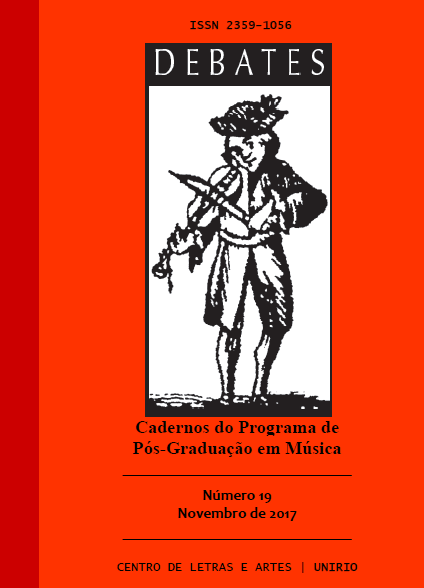O diálogo de influências na produção musical de Zeca Baleiro: hibridismo, polifonia e intertextualidade no rap Piercing
Resumo
Resumo: No atual contexto histórico, marcado pelo processo de globalização, práticas culturais diversas entram em contato e dialogam de múltiplas formas, de modo que se tornam constantes os processos de hibridização nas produções artísticas. Apresentamos uma análise de Piercing, rap de Zeca Baleiro, que integra o CD Vô Imbolá (1999) e também o DVD (2006) de mesmo título, tomados como produtos musicais vinculados à indústria cultural e ao universo urbano. Desenvolvido nas periferias negras americanas, o rap – termo formado pelas iniciais de rhythm and poetry (ritmo e poesia) – já é, em si, um estilo globalizado, que, como parte do movimento hip hop, tem cumprido importante papel na socialização da juventude das periferias urbanas brasileiras. Em Piercing, Zeca Baleiro reapropria-se criativamente do gênero musical rap, num trabalho que revela “traduções” de influências diversas, colocadas em diálogo e interconexão. Explicita-se, assim, o hibridismo de seu trabalho, que se manifesta através da polifonia e intertextualidade. De início, o refrão de seu rap é uma citação “modificada” (um détournement) dos versos de um conhecido samba, estabelecendo um diálogo com essa tradição musical. A intertextualidade está presente, ainda, através das “citações diretas”, que se realizam por meio de trechos sampleados (em que outras vozes se fazem concretamente presentes) e são explicitadas através das informações sobre suas fontes presentes no encarte impresso do CD, considerado como um elemento extramusical que também integra esse objeto cultural. As diversas camadas de significação do rap de Zeca Baleiro dependem, portanto, da capacidade de o ouvinte reconhecer as diferentes vozes e “resgatar” as relações estabelecidas com as diversas músicas citadas. Concluímos mostrando a relação entre hibridismo e intertextualidade, na medida em que as inter-relações entre diferentes práticas musicais expressam-se através das diversas vozes e diferentes textos.
Palavras-chave: Hibridismo. Intertextualidade. Significação. Rap. Zeca Baleiro.
The dialogue of influences in Zeca Baleiro’s musical production: hybridism, polyphony e intertextuality in the rap Piercing
Abstract: In the present historical context, marked by globalization, various cultural practices come into contact and dialogue in multiple ways giving rise to frequent processes of hybridization in artistic productions. This paper presents an analysis of Piercing, a rap by Zeca Baleiro – a Brazilian singer and composer – which is part of the 1999’s CD Vô Imbolá (I will make an embolada – a traditional popular musical genre) and is also presented in the DVD (2006) of the same title. Both CD and DVD are assumed as a musical production associated to the cultural industry and to the urban music universe. Developed in the African-American peripheries, rap (a term formed by the initials of “rhythm and poetry”) now is in itself a globalized style that, as part of the hip hop movement, has fulfilled an important role in the socialization of Brazilian youth of urban peripheries. In Piercing, Zeca Baleiro creatively explores the musical genre rap in a work that reveals “translations” of various influences that are put in dialogue and interconnection. In this way, the hybridity of his work makes itself explicit, manifesting itself through polyphony and intertextuality. At first, his rap’s refrain is a "modified" quotation (a détournement) of a well-known samba’s verses, establishing a dialogue with this musical tradition. Intertextuality can still be found in the direct quotes, which come from sampled excerpts that make other voices concretely present. Printed information about these samples is offered on the CD booklet, taken as an extra-musical element that also integrates this cultural object. Therefore, the various layers of meaning enveloping Zeca Baleiro’s rap depend on the listener’s ability to recognize the different voices and to "rescue" the relationships established with the quoted songs. We conclude by showing the relationship between hybridization and intertextuality, insofar as interrelations between different musical practices are expressed through the different voices and texts.
Keywords: Hybridity. Intertextuality. Meaning. Rap. Zeca Baleiro.


